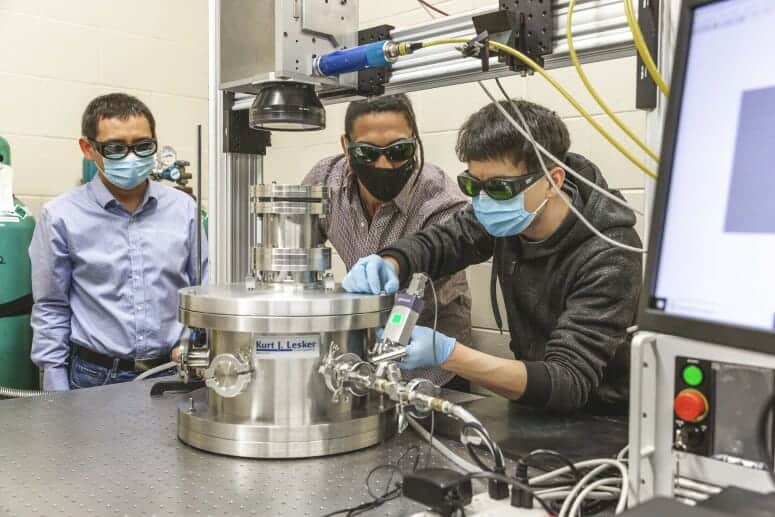University of Wisconsin–Madison researchers controlled defects in metal 3D printing by covering the metal powder with ceramic nanoparticles
More about the News
Additive manufacturing (also known as 3D printing) is significantly better at producing metal parts with very complicated geometries than traditional manufacturing methods, making it appealing for applications in the aerospace and biomedical industries, among others.
However, there is a drawback. Metal items made with additive manufacturing have flaws in the material, such as pores and cracks, that degrade the end part’s strength and longevity.
“We haven’t been able to consistently produce parts with the same high quality and reliability as those made by conventional methods using metal 3D printing,” says Lianyi Chen, an assistant professor of mechanical engineering at the University of Wisconsin–Madison. “This means we have serious concerns about using 3D-printed parts for critical or load-bearing applications where failure isn’t an option.” “The main impediment to adopting metal 3D printing in many applications is the quality issue.”
Chen and his students have now identified a way to make laser powder bed fusion, a popular additive manufacturing technology, generate metal parts with much fewer flaws. In a report just published in the journal Nature Communications, they detailed their findings.
“By making metal 3D printing technology far more trustworthy, we reveal a viable solution to overcome the quality problem by enabling it to generate consistent, defect-free parts,” Chen explains. “We were able to 3D print a metal part with very few defects and comparable quality to a commercially manufactured part that you could buy off the shelf using our unique process.”
It’s a potential answer to a long-standing issue in metal additive manufacturing, and it pave the way for wider industry use of the technology.
Ceramic nanoparticles are used by the researchers to control instabilities in the laser powder bed fusion additive manufacturing process, which produce flaws.
A high-energy laser beam is used to melt tiny layers of metallic powder in specific spots in laser powder bed fusion. The metal section is then formed while the material cools. When the laser interacts with the powdered substance, the powder surface heats up to boiling point, releasing hot vapor. As a result of the vaporization, pressure is exerted on the pool of melting material, causing droplets to splash out. These droplets have the potential to induce unexpected flaws in the printed item. Droplets can sometimes collide and mix to form a larger droplet, complicating the additive manufacturing process and resulting in poor-quality printed items.
The researchers were able to regulate these defects by covering the metal powder with ceramic nanoparticles. They discovered that the nanoparticle covering stabilized the melt pool, preventing liquid droplets from flying out and generating larger spatters, using both high-speed synchrotron x-ray imaging and theoretical analysis.
“We discovered that when we introduced the nanoparticles, they gave the liquid droplets essentially an armor on the surface, so when they contacted, they didn’t blend together,” explains Minglei Qu, the study’s primary author. “We were able to get rid of the troublesome big splatter for the first time.”
Chen claims that the advancement could lead to advances in a wide range of applications, including laser polishing, laser cladding, welding, casting, and fluid stability management, among others, in addition to 3D manufacturing.
Qilin Guo, Luis I. Escano, Ali Nabaa, S. Mohammad H. Hojjatzadeh, and Zachary A. Young, all graduate students in Chen’s group, are also authors on the paper.
Subscribe to AM Chronicle Newsletter to stay connected: https://bit.ly/3fBZ1mP
Follow us on LinkedIn: https://bit.ly/3IjhrFq
Visit for more interesting content on additive manufacturing: https://amchronicle.com/



